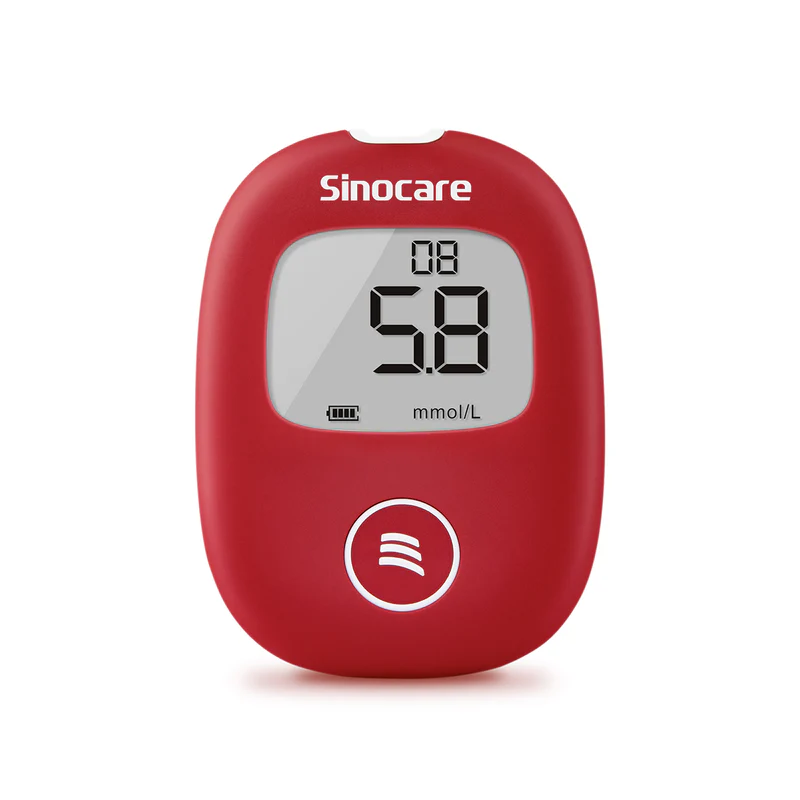Sinocare is a leading supplier of diabetes care essentials, dedicated to equipping users with reliable tools and knowledge for effective glucose management. The company highlights that selecting the appropriate lancet size is a critical yet often overlooked aspect of using a glucometer or blood sugar monitor, as it directly impacts testing comfort, blood sample quality, and consistent use. Sinocare also addresses a common user concern: “can you take blood sugar monitor on a plane” – noting that choosing a lancet size compatible with a portable blood sugar monitor enhances travel-friendly diabetes care.
Matching Lancet Gauge to Skin Thickness: A Foundation for Glucometer Use
Lancet size is measured by gauge (higher gauge = thinner needle), and the right choice starts with skin thickness. For users with thin skin (e.g., children, older adults), thinner lancets (31–33G) minimize discomfort while still drawing enough blood for the blood sugar monitor. Those with thicker skin may need slightly thicker lancets (28–30G) to ensure adequate sample volume for the glucometer. This compatibility is vital even when traveling – when users ask “can you take blood sugar monitor on a plane”, they also need assurance that their chosen lancets will work seamlessly with their portable device, avoiding testing disruptions.
Balancing Pain Tolerance with Blood Sugar Monitor Functionality
Pain tolerance plays a key role in selecting lancet size, as uncomfortable testing can discourage regular use of the glucometer. Thinner lancets (32–33G) are preferred for users sensitive to pain, as they cause less tissue damage while delivering the precise blood sample required by the blood sugar monitor. However, it’s important to avoid overly thin lancets if they fail to produce enough blood, leading to inaccurate glucometer readings. This balance is especially relevant for frequent travelers: when considering “can you take blood sugar monitor on a plane”, a well-chosen lancet ensures pain-free testing during trips, supporting consistent glucose monitoring.
Verifying Glucometer-Lancet Compatibility: Avoiding Blood Sugar Monitor Errors
Not all lancets are compatible with every glucometer – using an ill-fitting size can result in insufficient blood samples, faulty readings, or even damage to the blood sugar monitor. Users must check the glucometer manufacturer’s guidelines to confirm recommended lancet gauges, as this ensures the device functions optimally. Compatibility is also a travel essential: when answering “can you take blood sugar monitor on a plane”, it’s equally important to note that compatible lancets (paired with a portable blood sugar monitor) are allowed in carry-on luggage, making on-the-go testing reliable and hassle-free.
Choosing the Right Lancet Size: Elevating Glucometer Use at Home and On the Go
Selecting the appropriate lancet size is a simple yet impactful step to enhance glucometer and blood sugar monitor usability, combining comfort, accuracy, and convenience. It addresses core user needs – from daily testing comfort to travel readiness, including the common question “can you take blood sugar monitor on a plane”. For those seeking a seamless solution, the Sinocare Safe AQ Smart Blood Sugar Monitor is compact and lightweight, designed for easy testing anytime, anywhere. Its portable design pairs perfectly with properly sized lancets, supporting consistent, comfortable monitoring whether at home or traveling, aligning with smart diabetes care practices.


